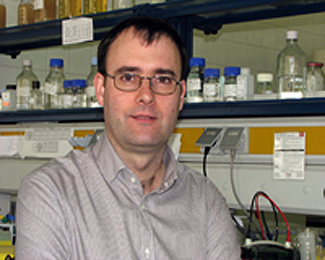Genetically corrected blood cells obtained

The research demonstrates that, for the first time, in the case of a genetic disease such as Fanconi anemia it is possible to correct the genetic defect in patient-specific skin cells by converting them into cells similar to embryonic stem cells (iPS cells) which later can be differentiated towards blood cells.
These results are the proof of concept that this new therapeutic strategy has the potential of generating tissues using the very skin of those affected with these genetic diseases. This observation is particularly important in diseases such as Fanconi anemia, where one of the main problems lies in the lack of blood cell in the bone marrow of those affected. However, according to researchers, this new therapeutic strategy can be applied to many other genetic diseases by differentiating iPS cells towards healthy tissues these patients lack.
The generation of blood cells in this research was carried out in vitro, in cell culture plates, which places the research in a preclinical environment. It remains unknown whether they would generate blood cells after being transplanted. Moreover, the transplant of embryonic stem cells in animals has revealed that these cells can cause tumours. Therefore, the possibility of treating Fanconi anemia patients by transplanting iPS cells must wait until the efficacy and safety of these new discoveries are demonstrated in experimental models.
Researchers taking part in the study are confident that in the next few years it will be possible to improve the efficacy and safety of this new scientific discovery, and that some time in the future, clinical professionals will be able to cure patients suffering from genetic diseases such as Fanconi anemia.
UAB and CIEMAT, leading research centres in Fanconi anemia
Fanconi anemia is a rare hereditary disease which mainly affects the bone marrow and causes it to produce less blood cells. The lack of white blood cells makes individuals more vulnerable to infections, while the lack of platelets or red blood cells may prevent clotting or lead to fatigue. Treatment includes transplanting healthy blood stem cells from the bone marrow or umbilical cord of a compatible donor or, if possible, a relative. Unfortunately, few patients can find a healthy and compatible donor.
UAB, through the Research Group directed by Dr Jordi Surrallés, professor at the Department of Genetics and Microbiology, and CIEMAT, through the group led by Dr Juan Antonio Bueren, director of the Hematopoiesis and Gene Therapy Division, are two of the world's leading centres in the research on Fanconi anemia. In recent years they have made many important contributions to help understand the genetic mechanisms of the disease. These past few years, the Office of the Vice-Rector for Strategic Projects at UAB has cofinanced translational research on Fanconi anemia as a model disease in biomedical and biotechnological research.
About CIBERER
The research group led by doctors Surrallés and Bueren are part of the Networking Centre of Biomedical Research in Rare Diseases(CIBERER). Its aim is to improve translational research (transforming discoveries into clinical applications for the benefits of patients) on rare diseases in Spain. It is a pioneer centre in Europe and few centres in the world can compare to its model as a consortium of institutions.
Backed by the Spanish Ministry of Science and Innovation through the Institute of Health Carlos III, it is formed by 30 organisations, mainly universities, hospitals, and public and private research centres dedicated to studying rare diseases. It administrates and coordinates the efforts and synergies produced by the over 700 scientists and researchers and 61 research groups existing throughout Spain.
CIBERER acts as a vehicle between biomedical research, health services and patients and their families, and therapeutic conferences are the channel through which clinical professionals and patient associations are informed of the research advances taking place. At the same time, the centre gives support and promotes actions aimed at offering research services for rare diseases as a whole.
References
Disease-corrected haematopoietic progenitors from Fanconi anaemia induced pluripotent stem cells. Àngel Raya, Ignasi Rodríguez-Piza, Guillermo Guenechea, Rita Vassena1, Susana Navarro, Maria José Barrero, Antonella Consiglio, Maria Castella, Paula Río, Eduard Sleep, Federico González, Gustavo Tiscornia, Elena Garreta, Trond Aasen, Anna Veiga, Inder M. Verma, Jordi Surrallés, Juan Bueren & Juan Carlos Izpisúa Belmonte/doi:10.1038/nature08129.

